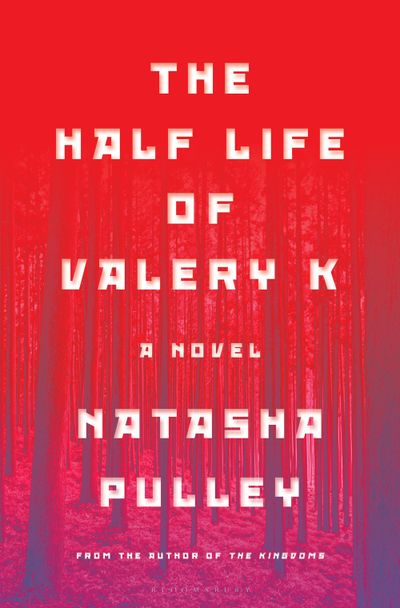Book World: Natasha Pulley delivers a historical thriller with intellectual heft

After embellishing the 19th century with alternative histories and fantastic developments in four previous novels, beginning with her best-selling debut, “The Watchmaker of Filigree Street,” Natasha Pulley grounds her latest work in an actual 20th-century event. “The Half Life of Valery K” takes off from a 1957 nuclear explosion in the Soviet Union, which blasted mortally dangerous levels of radiation into the atmosphere, and the ensuing coverup by the Soviet government. Exhibiting all the storytelling skills that made her earlier books readable and popular, Pulley offers a piercing study of how a police state deforms individual psychologies, personal relationships and professional ethics.
Valery Kolkhanov has been a prisoner in a Siberian labor camp for six years when he is summoned in 1963 to City 40, “a nature reserve” in western Russia. The area was deliberately exposed to radioactive contamination, project director Elena Resovskaya says, so that the effects of radiation on an ecosystem could be studied and species that develop resistance to it identified. Resovskaya asked for Valery, who did graduate work with her in the 1930s, because he was a biochemist specializing in radiation before his arrest. He will serve the rest of his 10-year sentence as “a prisoner scientist,” KGB security chief Konstantin Shenkov tells him.
This unexpected assignment is a relief to Valery. Viewing the irradiated desolation on his drive to the facility, he tells Shenkov, he assumed he was selected as a disposable enemy of the state to die “of radiation in a human trial.” Valery, who confessed to every absurd charge leveled against him in 1957, is under no illusions about the nature of the Soviet system, nor does he expect others to behave any better than he did; he was relieved to see his friend’s name absent from the list of people he was required to denounce, because it meant she denounced him first and was safe.
But Valery is not as pragmatic as he thinks. He notices suspicious irregularities in the data Resovskaya provides that suggest radiation levels are much higher than stated, and he warns residents of the nearby town that their children are swimming in a toxic river. He gets off with a warning from Shenkov, but a colleague who shared his concern is not so lucky. When he asks why she was suddenly sent back to Moscow, Resovskaya snaps, “You need to learn to talk in code. (She) tried to call a journalist … and Shenkov had to shoot her.” Valery finds it hard not to speak the truth, even though he knows it could be fatal. Scattered comments, ambiguous emotional expressions and glimpses of Valery’s past are skillfully used by Pulley to make it clear Valery is a homosexual in a society where that is a criminal offense, and that his feelings for Shenkov are dangerously warm.
The KGB officer is among the many three-dimensional characters who give Pulley’s narrative human coloring as it hurtles through one horrifying revelation after another toward a bravura (albeit implausible) climax. Shenkov matter-of-factly carries out his murderous duties “because otherwise a psychopath would”; he strives to save those he can. He helps Valery uncover what is going on at City 40 because he fears the effect of radiation on his children and wife, Anna, a nuclear physicist who has had three miscarriages. Pre-eminent in Pulley’s vivid cast is the fascinating and appalling Resovskaya, whose coldblooded pursuit of her scientific aims drives the plot. She describes injecting subjects with radioactive materials as “the most urgent and important clinical trial in the Soviet Union,” and she justifies every inhuman action by claiming that the Americans do – or will do – the same things.
Any Western reader inclined to dismiss this sort of behavior as restricted to the Soviet Union should think again when it’s revealed that City 40’s radioactive soil comes from improperly disposed nuclear waste. “We used to use tanks, with cooling systems,” says Anna. “But when one of the cooling systems broke down, the cost of replacing it was estimated very high, and the physicists were asked to reassess whether it was necessary.” Safety procedures ignored or violated because of financial considerations are hardly unheard of in capitalist countries, and Valery makes some tart observations about social inequities in the novel.
Pulley’s broad perspective distinguishes her work from that of more-routine thriller authors. Studded with memorable characters and deepened by its exploration of thorny moral issues, “The Half Life of Valery K” is gripping popular entertainment with a pleasing intellectual heft.